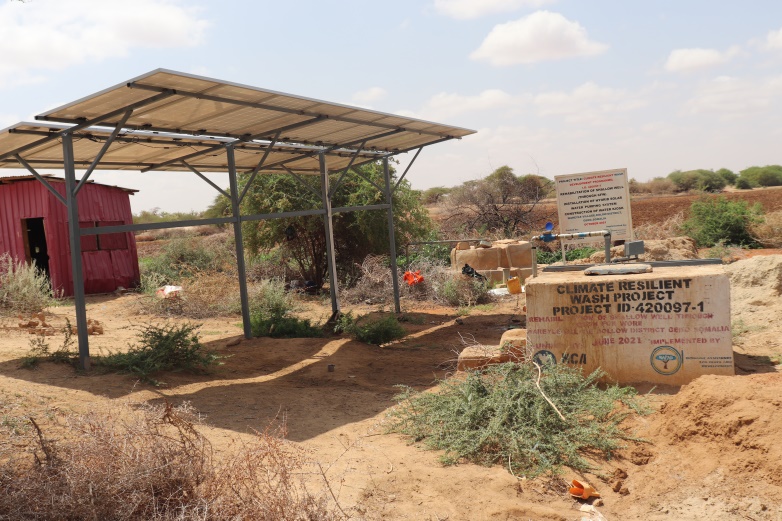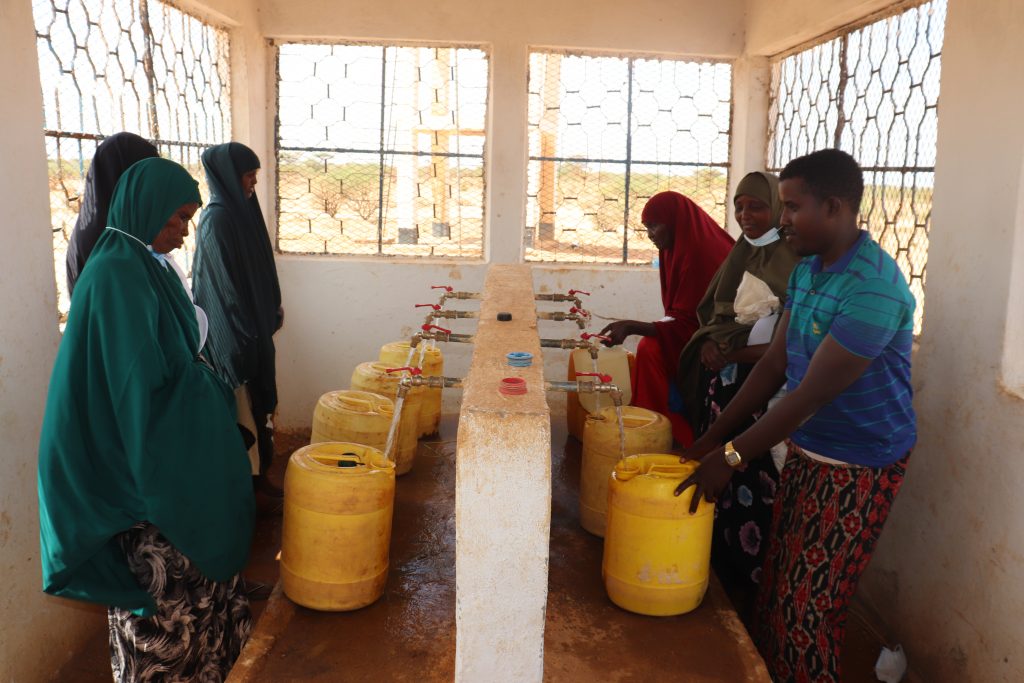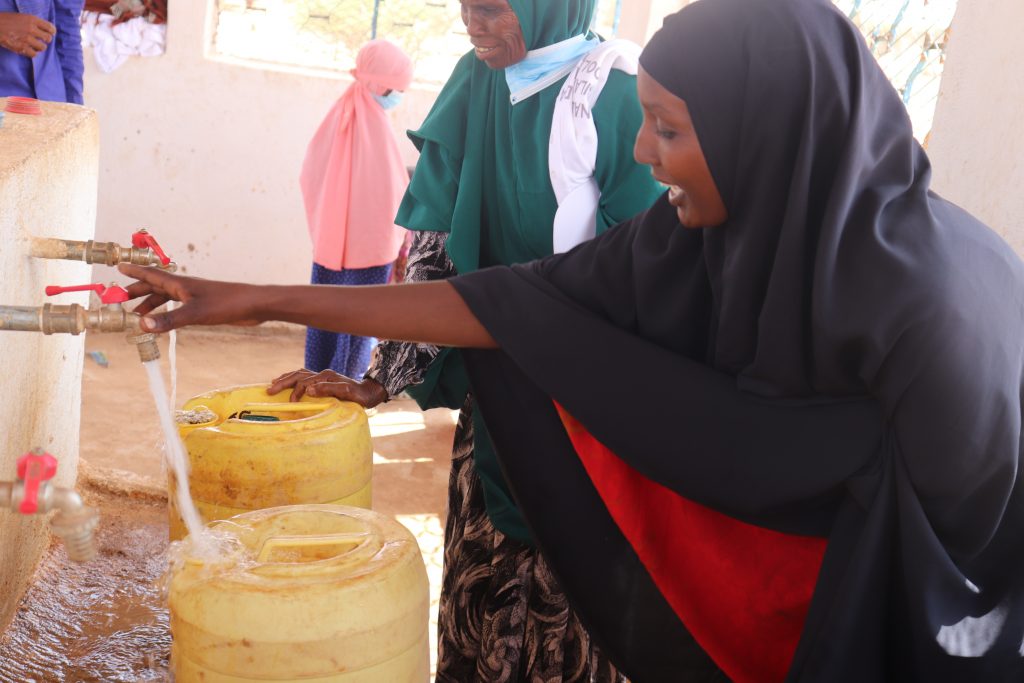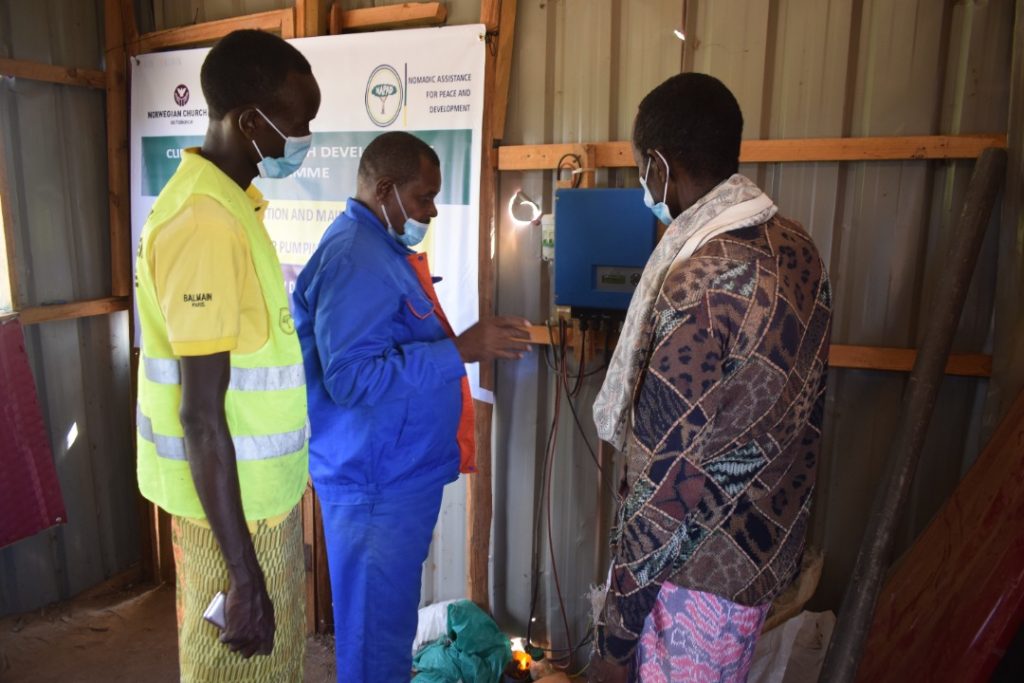The Drought Situation Report No.7 of May 2022 indicates that 6.1 million people have been affected by the drought emergency, of whom 771,400 have been displaced from their homes in search of water, food, and pasture. The majority of these are women and children. According to the UNOCHA Somalia Water Shortage Update of April 2022, an estimated 4.2 million people in Somalia are facing acute water shortages with over 159 strategic communal boreholes in need of urgent upgrading to restore their functionality.
These follow seasons of low to no rainfall which has led to these strategic water sources drying up. Women and girls have been forced to fetch water from often distant and unsafe open wells. This situation has exposed them to conflict at specific water points as they compete over the scarce resource with livestock owners or even experience physical or sexual assault as they trek long distances to and from their homes in search of water. Many families have also been forced to migrate in search of water for domestic use and water for their already weakened livestock. Children and especially girls have also been adversely affected as they have been forced to withdraw from schools as they take up domestic roles
In response to the worsening water shortage in Wareyle village, NAPAD implemented a project that rehabilitated the Wareyle Village shallow well near the river Jubba his project was implemented with funding from Norwegian Church Aid (NCA) through the Climate Resilience Program. Wareyle Village is located kilometres east of Dollow District in the Gedo region. It is home to Alasa Dhalow Ismail, a mother of four children. Before the completion of the water project in 2021, Alasa was forced to walk each morning to the river Jubba , 1.75 Kilometres away, with other mothers and daughters from her village to fetch water. They endured the scorching sun and thorny bushes every day to get this valuable commodity.
Wareyle Village’s shallow well was in a dilapidated state after it was damaged by floods in previous years. The diesel fuel-powered water pump had also developed technical problems and the community could not afford to pay for its repairs.
“Previously, walking to the river every dawn wasn’t only tiresome but also very risky for our children. And the water we fetched was never enough for the family.” Recalls Alasa Dhalow.
The rehabilitation of the dilapidated shallow well was conducted through a Cash for Work program. 16 skilled and unskilled community members, 4 of whom were women, were engaged in the restoration of this productive community asset. For the duration of their engagement in the restoration work, these community members received cash transfers that allowed them to buy food and other basic services such as medicine. Besides, earning a dignified income during the restoration period, their involvement also gave community members a sense of ownership in the project.
The project also involved the rehabilitation of an elevated 20,000-litre water tank and water pipe network that delivered water from the tank to the village water kiosk newly constructed by the same project. The community members can now draw water simultaneously from the water kiosks through its eight taps. NAPAD also installed a hybrid solar water pumping system next to the well which has enabled the efficient pumping of water from the borehole to the water storage tank which flows by gravity to the village water kiosk.

This water supply infrastructure is supplying water to approximately 2472 community members in Wareyle and is also benefitting community members from the nearby villages of Lanbuley, Burabor, and Goronshiidle.

The project has allowed this community to have access to clean, safe, and affordable water, lowering the risk of people contracting water-borne diseases like cholera. The proximity of the water collection points to the Wareyle village will ensure women have time to engage in other productive activities and girls will consistently attend school.

“I can now access water at any time since the water kiosk is very close to my home. We thank NAPAD and NCA for implementing this project in our village.’’ Reported Alasa.
To ensure that the Wareyle community was able to manage the water supply infrastructure, a community-led water management committee was selected and trained. Additionally, 2 solar operators from the community were trained on the operation and maintenance of the solar water pumping system.

The water management committee in training 
Training of solar pumping system operation & management and management operators
